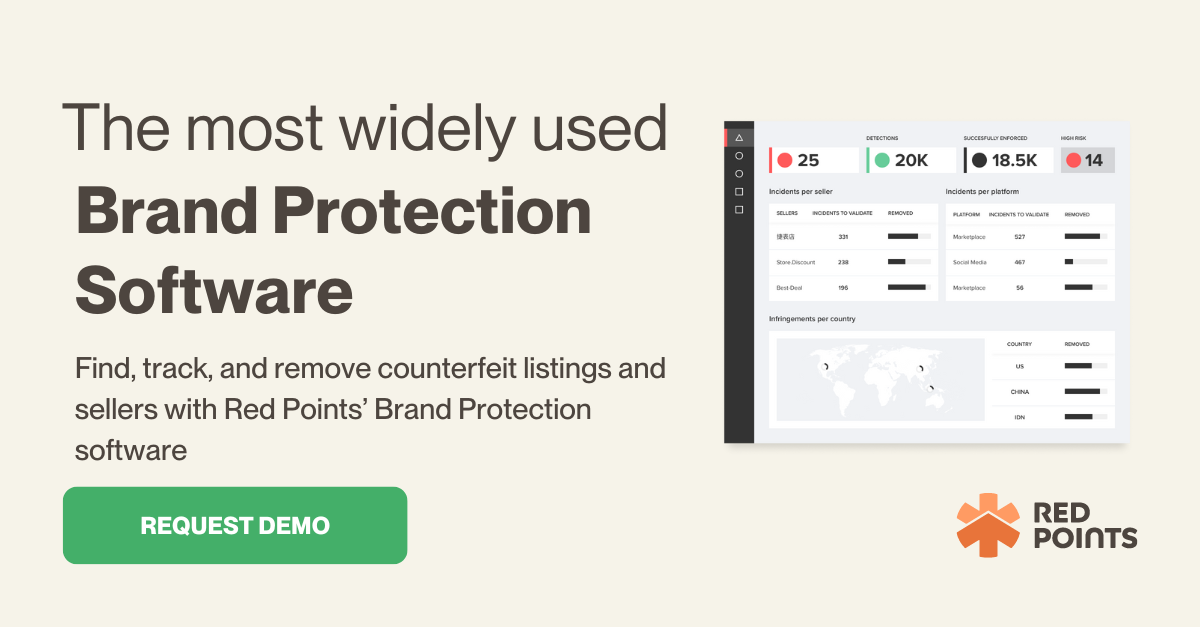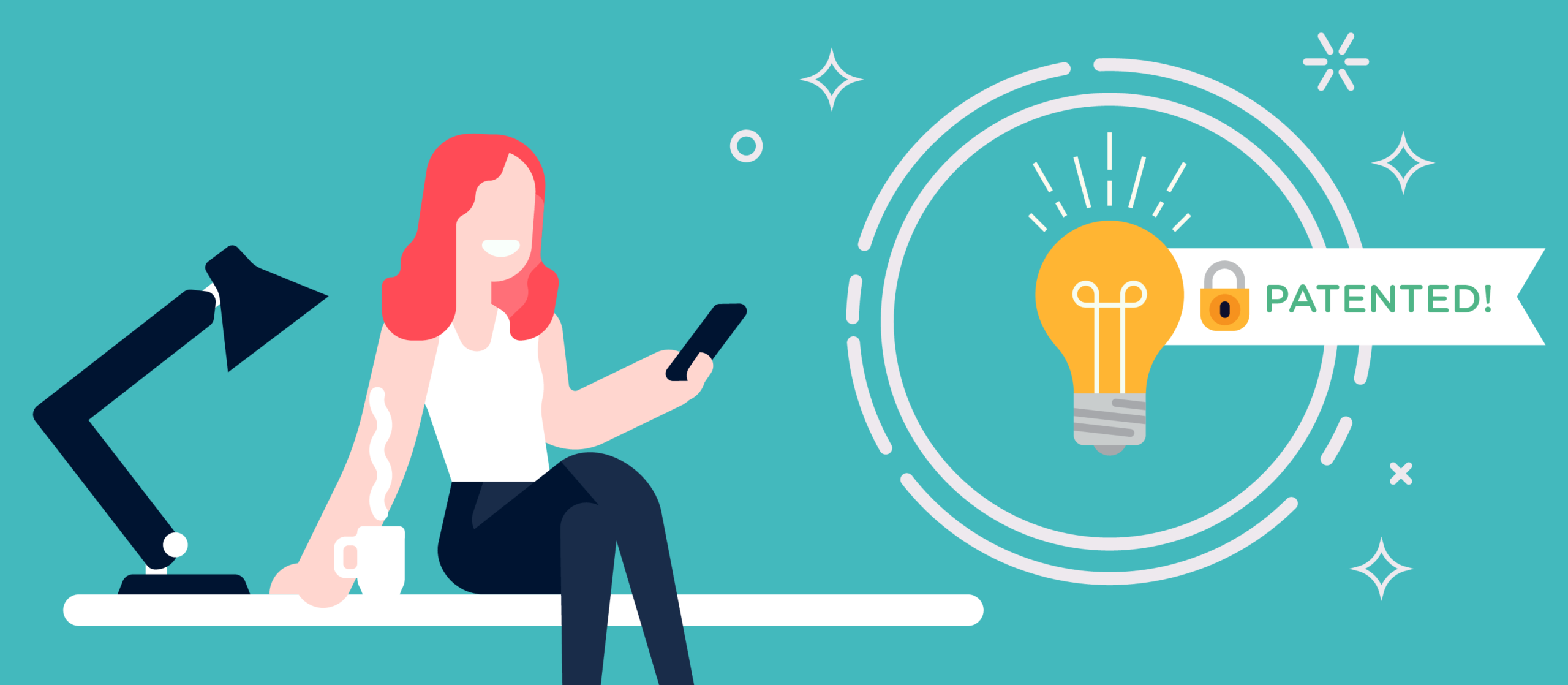If you’re working in a fashion brand, the chances are that you’ve got plenty of experience with counterfeit products. They’ve flooded social media, online marketplaces, online forums and every other niche they can find. This article will show brands how to protect their fashion products – and reign supreme over counterfeiters.
Summary
- Counterfeiting is such a force in today’s age that innovative fashion brands simply cannot turn a blind eye to it.
- Traditional IP protection – hiring lawyers to manually remove fakes – is very slow, and way too expensive for many brands to consider.
- Automation is the solution, by finding thousands of fakes for a fraction of the cost
Fashion brands can’t afford to ignore counterfeits
Counterfeiting has the ability to completely destroy brands. Of course, the biggest targets have usually been the biggest names in fashion. The fame of these runway giants is the easiest for counterfeiters to abuse for a quick sale.
However, young, up-and-coming fashion labels are at the greatest risk. The early days of any business are the most dangerous. The difference between make and break is thin, and becoming a target of counterfeiters can push a brand to break.
Reputations at risk
The most visible problem caused by counterfeiting for fashion brands is the damage taken to their reputation. For these companies to gain visibility in the world, and to stand out from all the competition, it’s important to earn a strong reputation, and to be seen in a positive light.
So when counterfeiters are able to imitate brands and trick shoppers, this reputation takes a serious hit. Shoddy clothing which falls apart, or doesn’t look quite right, or is made with the wrong materials, is very disappointing for consumers. And this negative reaction is put on the original brand.
This is what Knockaround feared when the number of counterfeit products started to grow. The brand started to get popular with stars such as Snoop Dogg, Jessica Alba, Matthew McConaughey, and others. This kind of validation was huge for the Knockaround team, and painted a bright picture of their future.
Knowing how quickly a reputation can suffer in the world of fashion, Knockaround knew these counterfeits could mean trouble. Celebrity endorsements wouldn’t mean much if people kept receiving low-quality, rip-off versions of their products.
“I want people that buy a pair of Knockarounds to have a genuine pair of Knockarounds. Piracy is something that has really frustrated me over the years, but it’s actually gotten a lot better, thanks to Red Points.”
Adam Moyer, CEO – Knockaround
In fact, this is how many brands discover they have a problem with fake products in the first place. While they were aware of the global counterfeiting issue, it was only when MVMT’s customers started complaining about the low-quality fakes they’d bought online that they knew something serious was going on.
Hijacking The 5TH’s social media
Social media is especially huge for fashion brands. The 5TH rely heavily on social media, and used the dawn of it to propel their own brand. It became an incredibly useful channel for finding new fans of their watches, and for interacting with their fans.
But social media can be used as a tool for counterfeiters, too. It’s where The 5TH saw their first counterfeit products, with customers showing off their “bargains”. At first, many of the staff actually felt flattered. It meant their product was good enough for others to copy. But the situation soon became more serious, when the potential damage these counterfeits could do dawned on them.
“We started noticing counterfeits when we’d check our social media feed, and we noticed that a lot of people had been posting watches which weren’t ours, but had our branding on it.”
Gerry Sison, Marketing Coordinator – The 5TH
The 5TH market their watches in another interesting way. Their brand is based on exclusivity – on the 5th day of each month, new limited editions are released. If you want them, you’ve got to be quick with the order, or they’re gone forever. For customers, they get to experience an extra layer of uniqueness when buying The 5TH’s watches. And for the brand, it means there’s monthly buzz about their new products.
But counterfeiters can prevent strategies like this from working. If a few weeks after these exclusives sell out, someone appears online with a fresh batch, then the sense of urgency is gone.
Why the traditional method is failing to protect fashion designs
Until recently, brands would use what we call the “traditional method” of fighting counterfeits. This form of fashion design protection involves hiring in-house lawyers to find counterfeit products being sold online, and having them deal with the platforms manually. Or worse, having existing staff handle all of this themselves.
But the evolution of technology means the old method of fighting counterfeits simply isn’t effective enough for brands nowadays.
Younger brands especially struggle when employing this method. This is the exact situation that the UK-based Lounge found themselves in. Either they would shell out for lawyers to endlessly perform these searches and fill out the enforcement requests, or they task members of their limited staff to do it – taking them away from work that truly grows their business.
“I felt quite annoyed and worried when I realized that after all the hard work our product was being copied mainly for Chinese marketplaces. We were 100% sure we had to fight against it – but how could we do it since we couldn’t afford paying expensive legal fees?”
Daniel Marsden, CEO – Lounge
And the cost isn’t the only issue with protecting a brand with lawyers. These are highly educated and skilled people, who are put to best use with managing intellectual property and working on real litigation against offenders. Repetitive, manual searching for fakes is a waste of their talents and brands’ money.
Many brands learn this lesson as their company grows. Often, they originally try to fight counterfeits with their existing employees – but this will balloon into a 3-hour-a-day task for staff members. So, they may turn to a dedicated team of IP lawyers. But the amount of counterfeits that are being sold online across dozens of websites will overwhelm any brand protection team. It soon becomee clear that a more powerful solution is needed.
So what’s the solution?
The power of automating brand protection
Technology is a huge reason for this explosion in global counterfeiting – between social media, more accessible manufacture technology, and online marketplaces replacing in-person shopping. It’s never been easier for counterfeiters to find, copy, and sell fake products.
But technology is also the solution. Automating online brand protection has massive benefits for brands compared to the traditional solution.
First off, the number of counterfeits that automation can find each month is colossal. With automation in their arsenal, utilizing features like machine learning, automated detection bots, and image recognition, brands can find thousands of counterfeits – even tens of thousands if their problem is severe. These results are consistently many times greater than those of a manual team.
This solution means more than simple volume, also. Consider an American fashion brand employing lawyers for this task. While they may be somewhat effective at finding fakes on American websites, the truth is nowadays that consumers can easily order their products from countries like China, Brazil, Turkey, and many others. The brand would be very hard-pressed to put together an expert IP team that can also search in these languages. But keyword monitoring technology does not suffer from this restriction – opening up websites worldsite for searches.
The other huge advantage is the cost of the automated solution. Compared to either the small team of a growing fashion brand, or equally to the crack squad of IP lawyers employed by giant brands, Red Points’ solution is still available at a much lower cost.
And if you’re a fashion brand spending hours of important staff time each day looking for, and dealing with, counterfeits – imagine what you could do with all that time back. Working on marketing campaigns, creating new designs for next season, working on getting better deals with providers.
Conclusion
Counterfeiting is, quite simply, an unignorable problem for fashion brands. If left unchecked, it could lead to a damaged reputation in the eyes of customers and stunted brand growth from stolen sales by counterfeiters. Knowing how to protect these designs online can be the difference between a brand surviving or not.
However, the solution is clear. Brands like Lounge, Knockaround, and The 5TH, as well as hundreds of others, have found tremendous success in their fight against counterfeiting.
The common denominator? Automation.
This technology can find more IP infringements online than a manual search possibly could, and takes them down as soon as their counterfeit status is validated. These services are available for brands of all sizes, and serve as huge money-savers in the long run.
If your brand is ready to see how an automated solution can help protect against fakes, you can request a demo of our brand protection solution, and gain personalized insights into your brand’s landscape. Alternatively, you can read about the features offered by Red Points in our product guide.







![[Webinar] Image recognition versus fashion infringements](https://www.redpoints.com/wp-content/uploads/2020/02/webinar-image-recognition-fashion-infringements.png)